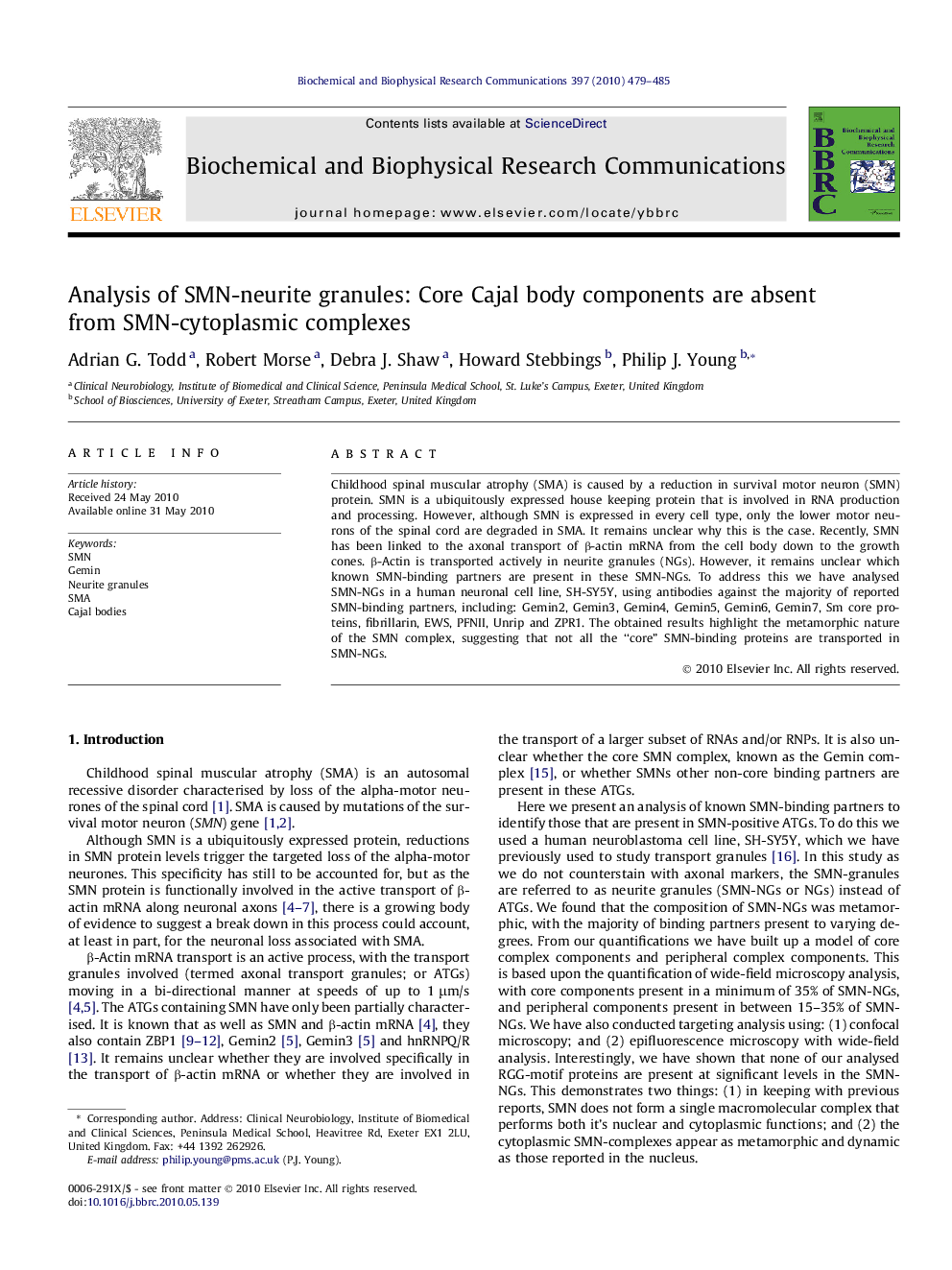| Article ID | Journal | Published Year | Pages | File Type |
|---|---|---|---|---|
| 1931896 | Biochemical and Biophysical Research Communications | 2010 | 7 Pages |
Childhood spinal muscular atrophy (SMA) is caused by a reduction in survival motor neuron (SMN) protein. SMN is a ubiquitously expressed house keeping protein that is involved in RNA production and processing. However, although SMN is expressed in every cell type, only the lower motor neurons of the spinal cord are degraded in SMA. It remains unclear why this is the case. Recently, SMN has been linked to the axonal transport of β-actin mRNA from the cell body down to the growth cones. β-Actin is transported actively in neurite granules (NGs). However, it remains unclear which known SMN-binding partners are present in these SMN-NGs. To address this we have analysed SMN-NGs in a human neuronal cell line, SH-SY5Y, using antibodies against the majority of reported SMN-binding partners, including: Gemin2, Gemin3, Gemin4, Gemin5, Gemin6, Gemin7, Sm core proteins, fibrillarin, EWS, PFNII, Unrip and ZPR1. The obtained results highlight the metamorphic nature of the SMN complex, suggesting that not all the “core” SMN-binding proteins are transported in SMN-NGs.
